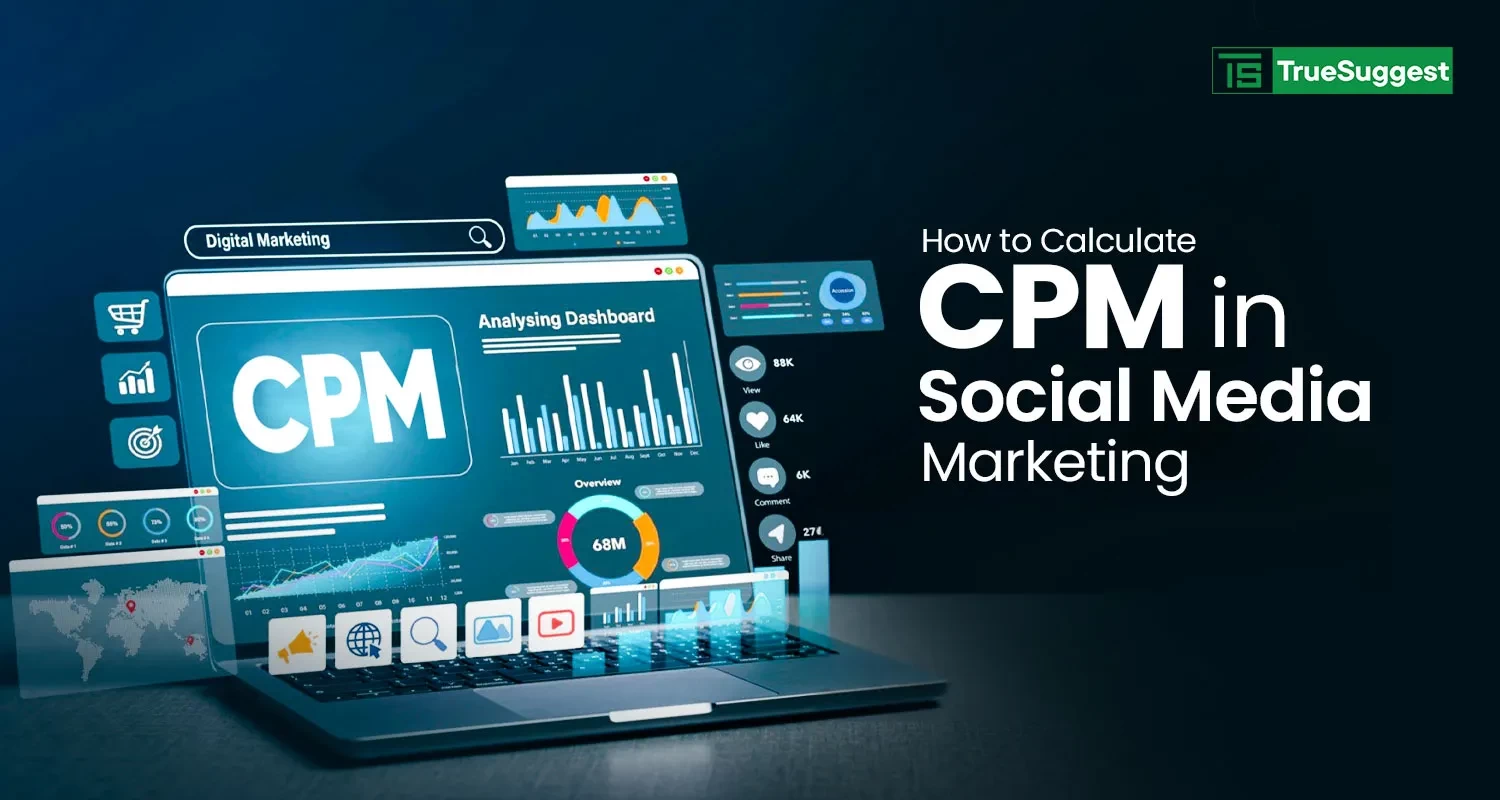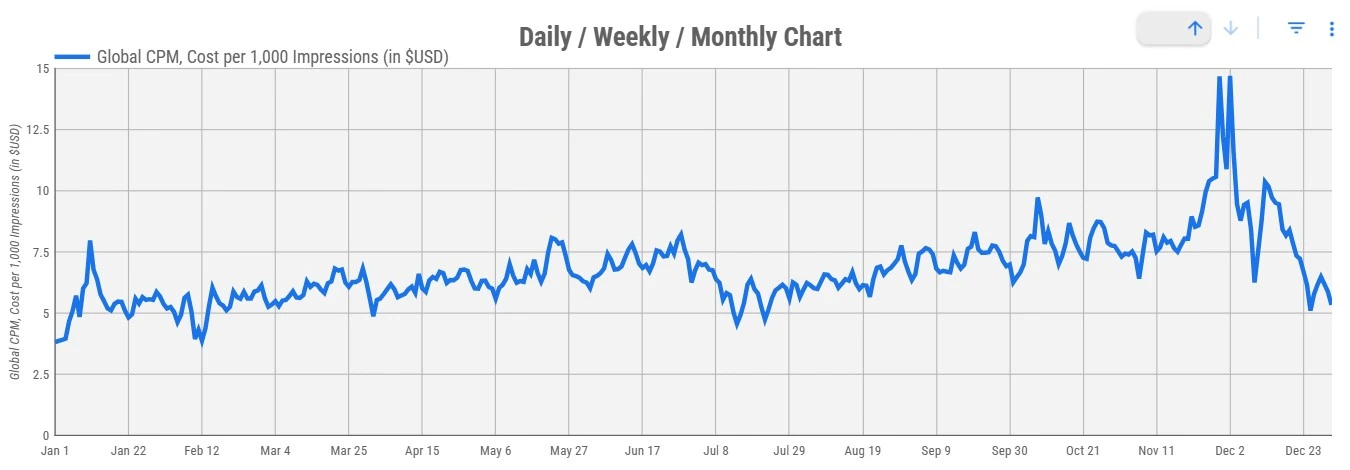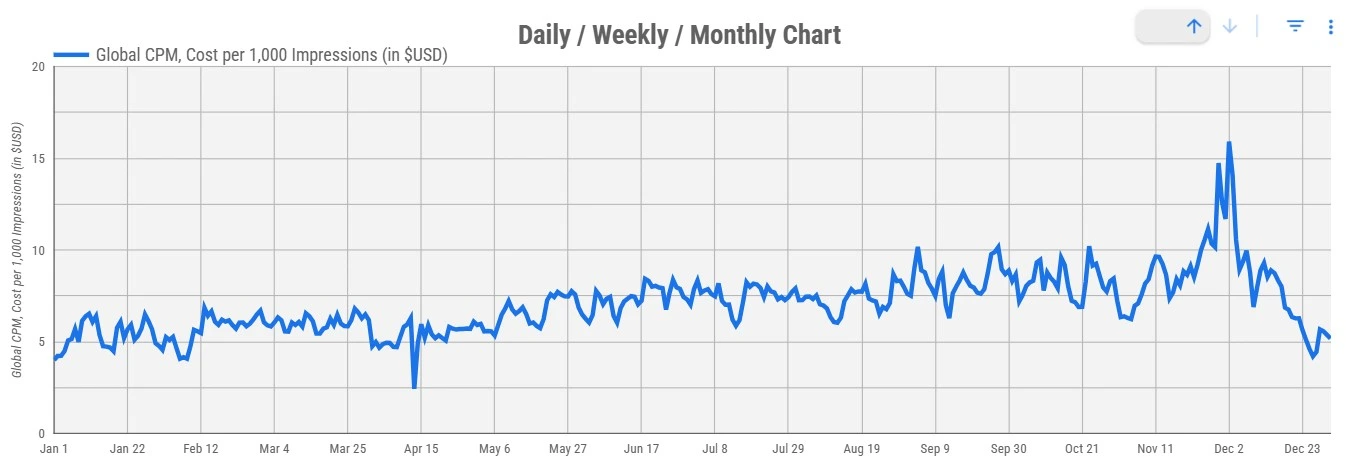


Struggling to understand what your ad spends is really buying you? Knowing how to calculate CPM in social media marketing can give you the clarity you need. CPM (Cost Per Mille) reveals how much you're paying for every 1,000 impressions—making it a powerful tool for understanding reach, efficiency, and campaign health.
But here’s the catch: most marketers either misread it or overlook what it truly tells you. In this guide, you'll learn how to calculate CPM the right way, uncover what’s driving high or low rates, and discover how to use it to fine-tune your targeting and budget. If you're serious about maximizing ad performance and want to learn how to calculate CPM in digital marketing, this is where it starts.
There's a few types of pricing models available while calculating the cost of social media marketing. CPM is one of them and it's one of the most commonly used price models. It stands for Cost Per Mille. The word ‘Mille’ is a latin term which means a thousand. So, precisely Cost Per Mille actually represents the ad cost for per thousand impressions of a digital ad.
CPM indicates how much you need to pay for every 1,000 impressions your ad receives. Now, you may ask, what is an impression? An impression is counted each time your ad is displayed to a user. It doesn’t matter whether they’re clicked, engaged, or take action.
CPM (Cost Per Mille) is a digital advertising variable that measures the cost of 1,000 ad impressions. It’s usually used to calculate the cost of impressions. In social media marketing, it tells you how much you pay for your ad to be seen 1,000 times. But how do you calculate it? Is it possible to calculate CPM with a GST Calculator? Certainly not possible. However, you can find your CPM by using the formula:
CPM = (Total Ad Spend ÷ Total Impressions) × 1,000
For example, if you spend $100 on a Facebook ad campaign and it’s shown 10,000 times to your targeted audience, your CPM is $10. This means you're paying $10 for every 1,000 views.
Most social media platforms like Facebook, Instagram, and LinkedIn automatically calculate CPM in their ad dashboards. After all, understanding how CPM works becomes helpful to assess results, compare campaigns, and make efficient budget decisions.
Besides, how do you calculate impressions? It’s not unusual to ask this question while calculating CPM. Let’s make this clear with the formula that assists you with cost per impression calculation:
Impressions = (Total Ad Spend ÷ CPM) × 1,000
Now, you spent $800 on a campaign with a CPM of $4, then:
Impressions = (800 ÷ 4) × 1,000 = 200,000
Nowadays, you can use an automated CPM Calculator to find the value easily without doing the manual calculations.
CPM is commonly used in brand awareness campaigns, where visibility has priorities over clicks or conversions. It’s a key metric for measuring the efficiency of ads running on different platforms like Facebook, Instagram, LinkedIn, or TikTok.
For social media marketers, CPM is not only a pricing model but also a key performance metric. It reveals the effectiveness of your budget in reaching audiences. CPM helps social media marketers to understand campaign efficiency and plan their strategy. It provides them with details on a campaign, such as:
Tracks Cost-Efficiency: A lower CPM indicates your ads are reaching more people for less money. Maintaining a lower CPM is essential for maximizing ad exposure within budget.
Monitor Campaign Health: Monitoring the health of ad campaigns is crucial for digital marketers. Sudden spikes in CPM can indicate issues like increased competition, poor ad relevance, or audience fatigue.
Informs Strategic Decisions: ROI is the most important element while investing on something. Comparing CPM across platforms and campaigns helps marketers decide where to invest or cut back for better ROI.
Optimization ideas for Brand Awareness: CPM is ideal for top-of-funnel goals where visibility is more important than clicks or conversions. Its main goal is to build recognition and stay in the minds of audiences.
Overall, it can be seen that CPM is an essential factor for social media marketers to track cost efficiency and monitor campaign health. It also optimizes ideas for brand awareness while focusing on better ROI strategies.
CPMs value consistently changes depending on platforms. Every social media platform has their own CPM pricing models. They also work on unique audience behavior, and competitive dynamics which actually lead to different CPM rates. To visualize the best CPM rates, understanding these differences are necessary. Understanding the concepts help you allocate your budget effectively and set sensible expectations for performance.
Right now, Facebook and Instagram both operate under the Meta Ads ecosystem. However, their CPM behavior doesn't follow the same criteria. They both have distinctions in audience demographics, content formats, engagement styles, and, obviously, in the cost section.

Image: Daily CPM chart of Facebook in 2024 by Gupta Media
Facebook normally provides lower CPM rates while targeting a broader audience. According to few sources, the healthy CPM for Facebook is usually in between $5 - $15. Besides, the average CPM of Facebook ads in 2024 is $13.57. Facebook ads took place in Feed, Stories, In-Stream Videos, Marketplace, Reels, etc. It’s an effective way for retargeting, and community engagement.

Image: Daily CPM chart of Instagram in 2024 by Gupta Media.
On the other hand, Instagram is useful for higher visual engagement. Younger people are mostly targeted on this platform. Also, mobile-first users have priority while planning to run an ad on Instagram. Instagram has a reputation for influencing people to make their final decisions. According to Gupta Media, Instagram has a CPM rate of $6.07 this year till the end of May.
TikTok and Snapchat are two popular and trending social media platforms right now. At the same time, this duo offers some of the lowest CPMs in the social media landscape. However, social media marketers must be creative and attached to trends for the best ad results on these platforms. With a trendy mind and creative content, you can get the best output at a low-cost CPM.
Let’s breakdown major differences between TikTok and Snapchat CPM:
|
Platform |
Audience (In age) |
Ad Formats |
Average CPM (of 2024) |
|
TikTok |
16–30 years |
In-Feed Ads, TopView, Branded Hashtag Challenges, Spark Ads |
$4.07 |
|
Snapchat |
13–24 years |
Snap Ads, Story Ads, Filters, Lenses, Spotlight |
$8.05 |
Source: Gupta Social Media CPM Tracker.
LinkedIn is a platform where B2B marketers go to connect with decision-makers. Things to be noted, its CPM rate is premium compared to other social media platforms. Unmatched audience targeting is one of the reasons for its premium price tag. Whether you run a campaign on lead generation or brand positioning, it will show your ads based on job title, industry, seniority, company size, and professional interests.
LinkedIn usually charges $20–$50+ for per thousand impressions. Isn’t it looks unusual while comparing with other social media such as facebook or instagram. Well, in LinkedIn you’re looking for specific professionals like IT directors, Accountants or HR managers. It won’t work the same way reaching a general consumer. Analysis of Gupta Media found that, in 2024 CPM of LinkedIn stands at approx $23.
CPM isn’t something like a fixed digit. It changes consistently based on a few factors. But the hardest part is, marketers can’t control all of these parameters equally. However, understanding these aspects helps you to maintain a lower CPM and build your campaign strategy wisely. Someone may prefer consulting a digital marketing agency for hessle-free campaign experience.
Let’s discuss a few marketing factors that really affect your CPM in social media campaigns:
Audience targeting is crucial for CPM values of social media marketing. It has a direct influence on lower or higher CPM rates. It depends on how you define the ad and to whom it will be shown. Narrowing down the target must increase the cost of an ad.
For example, you’re targeting CEOs in lifestyle startups or women aged 20–32 who shop for luxury fashion online. It makes your auction more competitive, and fewer people fit that profile. What’s important, this kind of filtering provides you the best leads even if they cost higher.
On the other hand, broad audience targeting like “all users aged 20–35 interested in football” is easier to reach. In that kind of ad scenario, the algorithm has enough room to optimize and competition is lower. These two scenarios portray the discussion we had above on CPM between Meta platforms (Facebook, Instagram) and LinkedIn.
Ad relevance and creative quality can create a huge impact on CPM in social media marketing. Someone may think running an ad by setting a cost limit with a random audience target is enough for leads. Though it's true, platforms will provide you a result by taking your money. But will it actually fulfill your needs?
Social media platforms like Facebook, Instagram, LinkedIn, and TikTok provide benefits to the marketers who deliver engaging, high-quality, creative ads. They’re rewarded with low CPM rates. On the other hand, unorganized and low-quality ads must pay higher per thousand impressions.
So, what is ad relevance? How could it help to maintain a lower CPM? Platform algorithms mainly determine it as a Relevance Score (also known as Quality Ranking) that is assigned based on how well your ad matches the interests and expectations of your target audience. It depends on basic things such as engagement rate, CTR, or negative feedback.
Creative quality is also important, as it is the ability to stop your audience from scrolling. There’s a popular quote, ‘first impression is the last impression,’ which is truly practical for CPM campaigns. Smart marketers make this thing possible with an image, video, headline, or maybe with a copy. A low-cost CPM also contains:
Bidding strategy and understanding the competition of the niche are two essential elements for digital marketers. It can directly influence your CPM rates for social media campaigns. Let’s have some discussions on bidding strategy first
How Bidding Strategy Impacts CPM:
Most social media platforms use a real time auction system to set the CPM. It makes you bid against other advertisers for the same impression. You can find common bidding strategies such as Manual Bidding and Automatic Bidding. However, there’s a bidding strategy named Smart Bidding, which is also an automated bidding strategy.
Manual Bidding: Manual bidding works as it is meant to. Marketers set a maximum bid for the results or impressions. It gives more control over the campaign expenses. However, it takes time and a detailed understanding of the ad settings.
Automatic Bidding: The automatic bidding strategy uses machine learning and processes the bid based on your goals. It’s the best way to optimize the bids for the best outcomes. Automated bidding is handy for beginners which also saves time. If you’re looking to operate a dynamic campaign with basic ideas, automatic bidding strategy is the sweetest option for you.
Understanding how to calculate CPM in social media marketing is just the starting point. Whereas, campaign success lies in how quickly you understand and grab the pinpoint of the strategy. Targeting the audience, learning bidding strategy, showing creativity, and platform choice play vital roles to run an efficient campaign. Your CPM value depends on how smartly you can control it.
On the contrary, showing poor creativity can cost a higher CPM rate. In addition, finding out what affects your social media campaigns CPM is equally important. Specially, an organized bidding strategy is crucial for a digital marketer. Strategic decision making like whether you should go for a manual bidding or strict to automated can influence the campaign result.
Ans: If you want to calculate the ad cost with CPM and impression, you can simply apply the formula:
Total Cost = (CPM × Impressions) ÷ 1000
For example, If your CPM is $5 and your ad gets 150,000 impressions, then:
Total Cost = (5 × 150,000) ÷ 1000 = $750.
Ans: The word CPC stands for Cost Per Click. It will let you know the amount you pay only when someone actually clicks your ad. The formula to calculate CPC is:
CPC = Total Ad Spend ÷ Total Clicks
On the other hand, CPM shows the amount you spent to get a thousand impressions. If your goal is to maximize visibility and impressions, running CPM-based ads is the ideal option.
Ans: Not always. A low CPM means cheaper reach, but a campaign's performance is evaluated based on factors like relevant impressions and conversion rates.